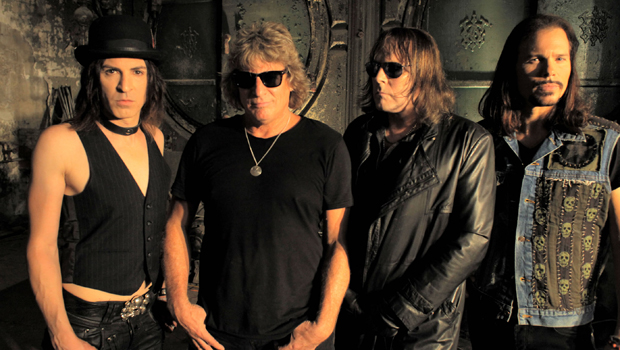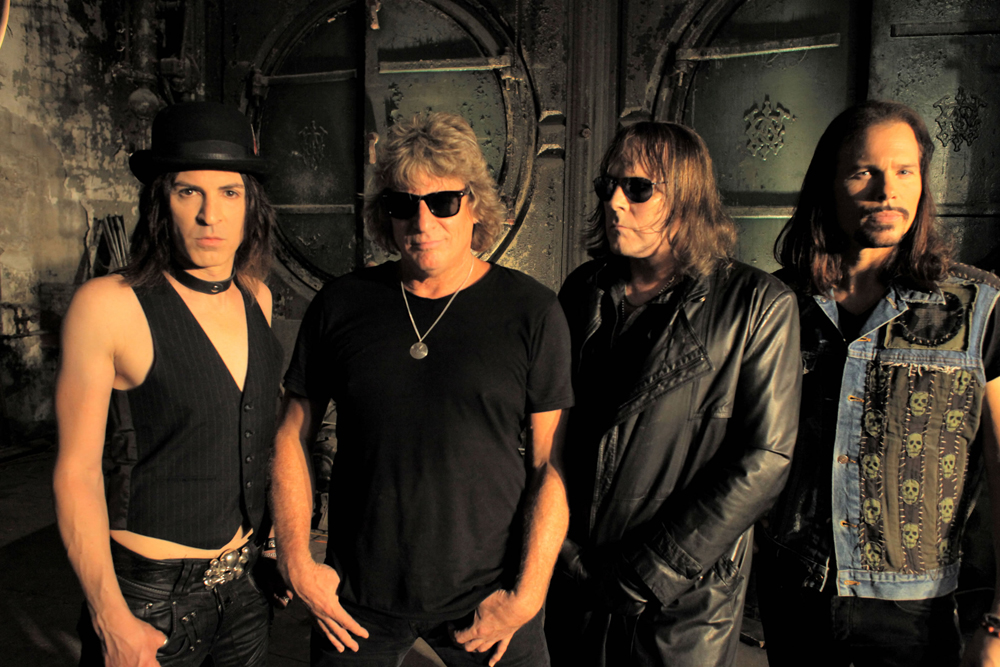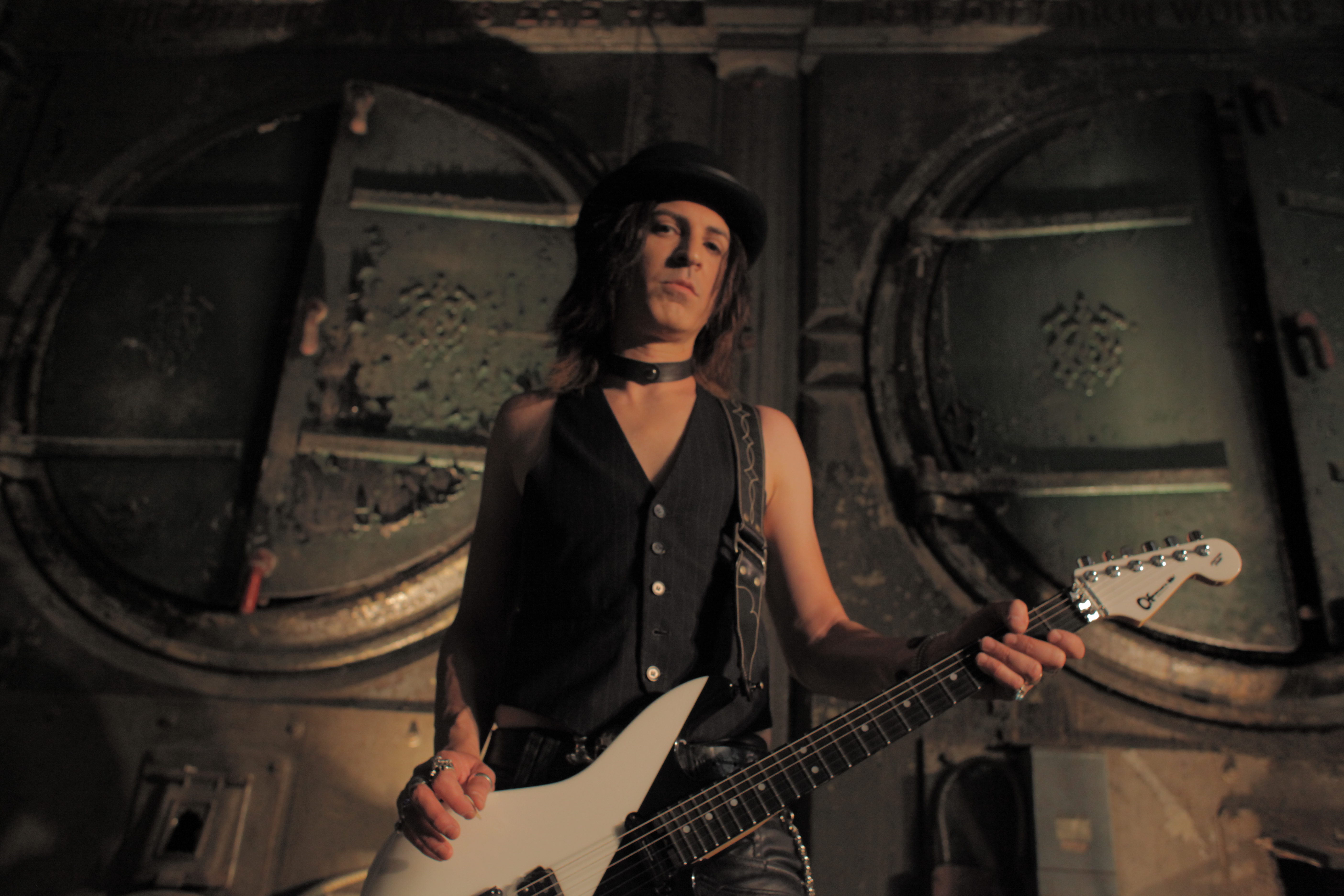Going For Broke: Dokken Guitarist Jon Levin Discusses New Album, 'Broken Bones'

Broken Bones, Dokken's 11th studio album, features a refreshing return to the signature sound reminiscent of such albums as Under Lock and Key and Back For The Attack.
With songs like “Empire," the title track and “Burning Tears," Don Dokken’s vocals are stronger than ever, and guitarist Jon Levin, now entering his second decade with the band, continues to unleash guitar fury, solidifying his place as one of the true metal greats.
I spoke with Levin about the different approaches he used for recording guitars on Broken Bones (Buy on iTunes) as well as his long-standing relationship with Charvel.
He also shares the story of why he decided to become an attorney and how he landed the role of a lifetime with Dokken.
GUITAR WORLD: What packages are available with the new Broken Bones album?
We have the standard CD as well as a CD/DVD combo. The DVD includes an interesting making-of video, along with a track-by-track segment where we talk about each individual song. There’s also some interesting behind-the-scenes footage and a few live clips as well.
How did you approach recording the guitars for this album?
All the latest guitar news, interviews, lessons, reviews, deals and more, direct to your inbox!
I approached things a little bit differently on the guitar this time around, and it worked out well. I was tired of doing records where I’d find a sound that I thought was great, and by the time all of the other parts got on it and it was mixed, I wasn’t satisfied. This time, I recorded everything on an Eleven Rack. The nice thing about it was, every note I recorded also had a DI signal (the direct sound right out of the guitar). So, later on we were able to go back into the studio and run my direct through any amp I wanted, mic it up and bring it back until I found sounds that I felt were great! It really gave me a lot more flexibility!I also tried something different with my solos. In the past, I’d usually go into the studio, take a few passes at a solo and as soon as I found something I liked that sounded good, that was pretty much it. This time, I came in only when I was in the mood and I’d do solo after solo until my inspiration ran out. I wouldn’t even listen to any of them at all. Then the next time I felt inspired to play, I’d go back to that song and do the same thing all over again. I did that over a number of days until I had about 15 or 20 different takes, and only then did I go through them and pick what I felt was the most appropriate direction for the song.Tell me a little about your relationship with Charvel.I’ve been with them since 2004 and couldn’t be happier. They are at a wonderful spot in their history right now, and Mike Shannon and Chip Ellis are just legends in the business. They’re doing a signature model for me that I believe is going to start out in a limited run. I’m very excited about that.Wasn’t there a period where you became disgruntled with the direction of music and actually changed careers for a while?Yeah, in the early '90s when the grunge thing came in. In my mind, I saw the entire concept of lead guitar just fall by the wayside. No one was playing solos anymore. It’s not that I didn’t like any of the bands; it just lost its luster to me. Once that happened, I decided to try a different career. So I went to law school, became a music attorney and started a record label.You credit George Lynch as being one of your influences.I do. George is a big influence of mine. So it’s pretty amazing that I ended up being in this band; which I’ve now been in for more than a decade.How did you wind up working with Dokken?I had known Jeff Pilson for quite a while, and one day he called and left a message asking if I’d be interested in coming in to play guitar on a few demos he was doing. The thing was, I had to come do it right away. I had been “out of the loop” for a while (being an attorney) and wasn’t sure what I was going to do. In fact, I was actually still in a suit at the time, having had spent the day in court. But my father, whose house I was staying in at the time, also heard the message and pushed me into doing it.So I showed up in the studio and found out rather quickly that it was for Dokken. I literally walked in, and within five seconds Don hands me a red Les Paul and says, “Play!” I asked him if I could at least hear the track first and he said, “No, just play. It’s in E." [laughs]. I wound up playing two solos that day; one of which is on "The Irish Song" from a Japanese release called Long Way Home. That’s actually my lead from that day on there.A few weeks go by, and I get another call from Jeff. Only this time he says, “Hey man, we’re playing at the Dallas Starplex for 20,000 people. How do you do under pressure?” I said, “Give me the song list!”As guitarist for Dokken, has being an attorney ever come in handy for you?Absolutely. I specifically remember an incident that happened during the Hell To Pay Tour in 2004. We were playing a show in Oklahoma City and I had about 10 minutes left to go on stage when I suddenly realized our tour manager was nowhere to be seen. We all immediately figured something was wrong, and sure enough, I checked my phone and there was a message from him saying, “Hey, man! You gotta come bail me out! I’m in the Oklahoma City jail!” Apparently, he had gotten arrested for something really silly. After the show, we pulled the tour bus up alongside the jail. At this point, I’m still in my leather pants from the gig and still sporting really long hair. So I go in looking to try to get my “client” out of jail. The lady there thought I was crazy; she didn’t believe for a minute that I was a lawyer. Fortunately, I had my bar card on me, so I showed it to her and was able to get him out! [laughs].Keep up with Dokken at their official website and Facebook page.Photo: Devin DeHaven


James is a guitarist and freelance writer who's interviewed some of the biggest names in music. He is the author of four books and his writing credits include work for Guitar World, AXS and Yahoo! as well as for his hometown newspaper where he writes on a variety of topics with both passion and humor. As a guitarist, he's performed everywhere from local bars and nightclubs to some of the biggest stages in front of thousands of music fans.

